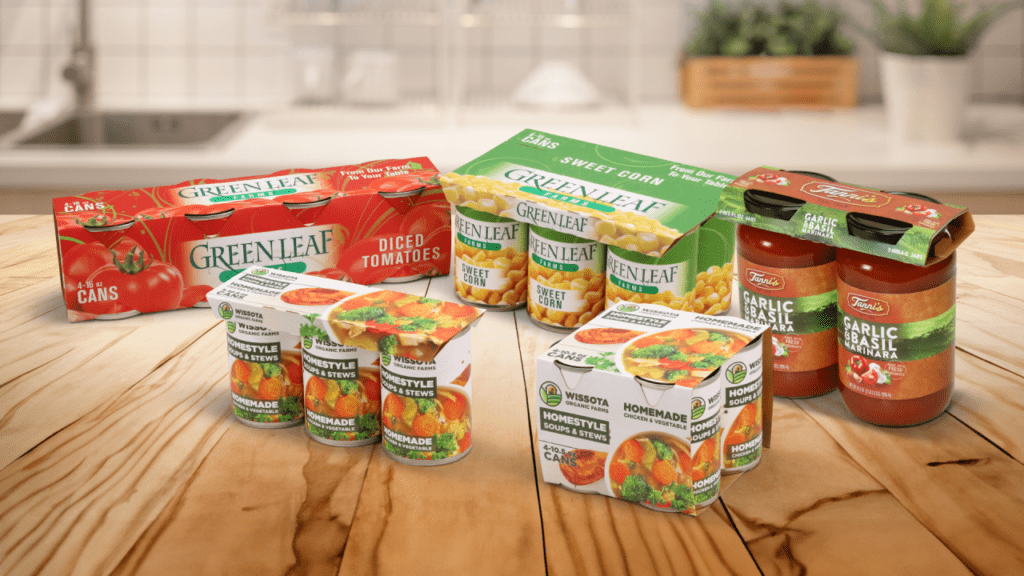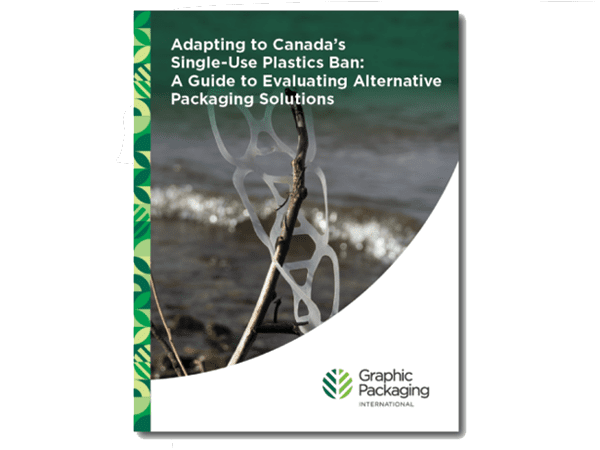article
Transitioning Food Multipacks to Paperboard, Made Easy

The most effective way to paint a picture of the world’s plastic consumption is to simply lay out the numbers.
The OECD found global plastic production reached 460 million tons in 2019, more than double the level it was in 2000. Only nine percent of it was successfully recycled, with 19 percent being incinerated and nearly half ending up in a landfill. 20 percent is either sent to uncontrolled dumping sites or leaked into the environment. If disposed of improperly, plastic can take up to 400 years to break down.
The environmental benefits of paperboard
In line with their environmental sustainability goals, many brands and retailers are making the switch away from plastic rings and shrink film for multipacks of food cans, jars, and bottles to more sustainable alternatives, and paperboard packaging is a clear favorite.
According to the Environmental Protection Agency, paper and paperboard packaging is far more likely to be recycled than plastic, with paper making up 66.5 percent of all recycled materials in the US compared to 4.47 percent for plastic. In Europe, recycling rates are higher, but paperboard is still more recycled by an overwhelming margin, with 71.4 percent of paperboard recycled compared to 38 percent of plastics.
Consumers are increasingly aware of these facts and are driving the change they want to see by choosing more sustainably packaged products at the checkout. A Trivium study found 67 percent of consumers would change their shopping habits if they knew it would reduce their environmental impact.
However, the sustainability of a food multipack is irrelevant if it can’t meet the performance requirements of its particular product application.
Paper board fit for purpose
A paperboard solution must also offer flexibility in terms of pack styles, formats, and size capabilities. Luckily, this is an area where paperboard packaging shines.
Fully enclosed multipacks are ideal for larger multipacks, delivering maximum coverage to protect a product from all angles and offer the broadest billboarding space. They can also offer consumer-friendly features like carry handles and finger holes. Machine solutions for fully enclosed multipacks can be very flexible, enabling a range of designs to be produced.
Wrap-style multipacks offer just enough coverage to secure the products while still enabling a glimpse of the product inside. A balanced solution, wraps are available in a variety of styles. They ship flat and require no glue, improving operational efficiency.
Clip-style multipacks are the minimal material option, using a single folded sheet of paperboard that holds cans together. They offer great comfort and convenience for the consumer via the integrated finger holes.
Keeping consumer convenience in mind
Plastic rings and shrink film can be difficult to carry and open, and confusing for consumers who may be unsure about what can be recycled and how. Paperboard multipacks, in contrast, offer excellent options for building-in carry handles or finger holes, are easy to dispense, and can be recycled through household waste streams.
High impact on the retail shelf
Paperboard multipacks enable brands and converters to maximize on-shelf differentiation and brand storytelling. The printing possibilities unlocked by paper include premium-quality graphics, full-spectrum colors, gloss coatings, tactile finishes, and many more enhancements that plastic cannot match.
Paper is also an inherently more appealing material to today’s consumers. An Ipsos study found 71 percent of American consumers claimed they were more likely to buy brands that used paper or cardboard packaging. 63 percent felt paper and cardboard packaging made a product feel more premium or high quality.
Both points combined mean paperboard packaging offers unlimited opportunities for interesting printed and structural designs and brand premiumization.
Future-proofing your food multipacks
Companies that stay on the leading edge of innovation have a clear competitive advantage. Paperboard multipacks are rapidly eclipsing plastic-based packaging solutions by addressing consumer concerns and accommodating legislation alongside many other benefits over single-use plastic rings and shrink film.
By reducing the dependence on single-use plastics, satisfying evolving consumer preferences, and differentiating your brand, it’s possible to develop packaging solutions today that are ready for the more sustainable world of tomorrow.
Learn more about the transition to paperboard packaging for your portfolio of food multipacks by reading our eBook.


